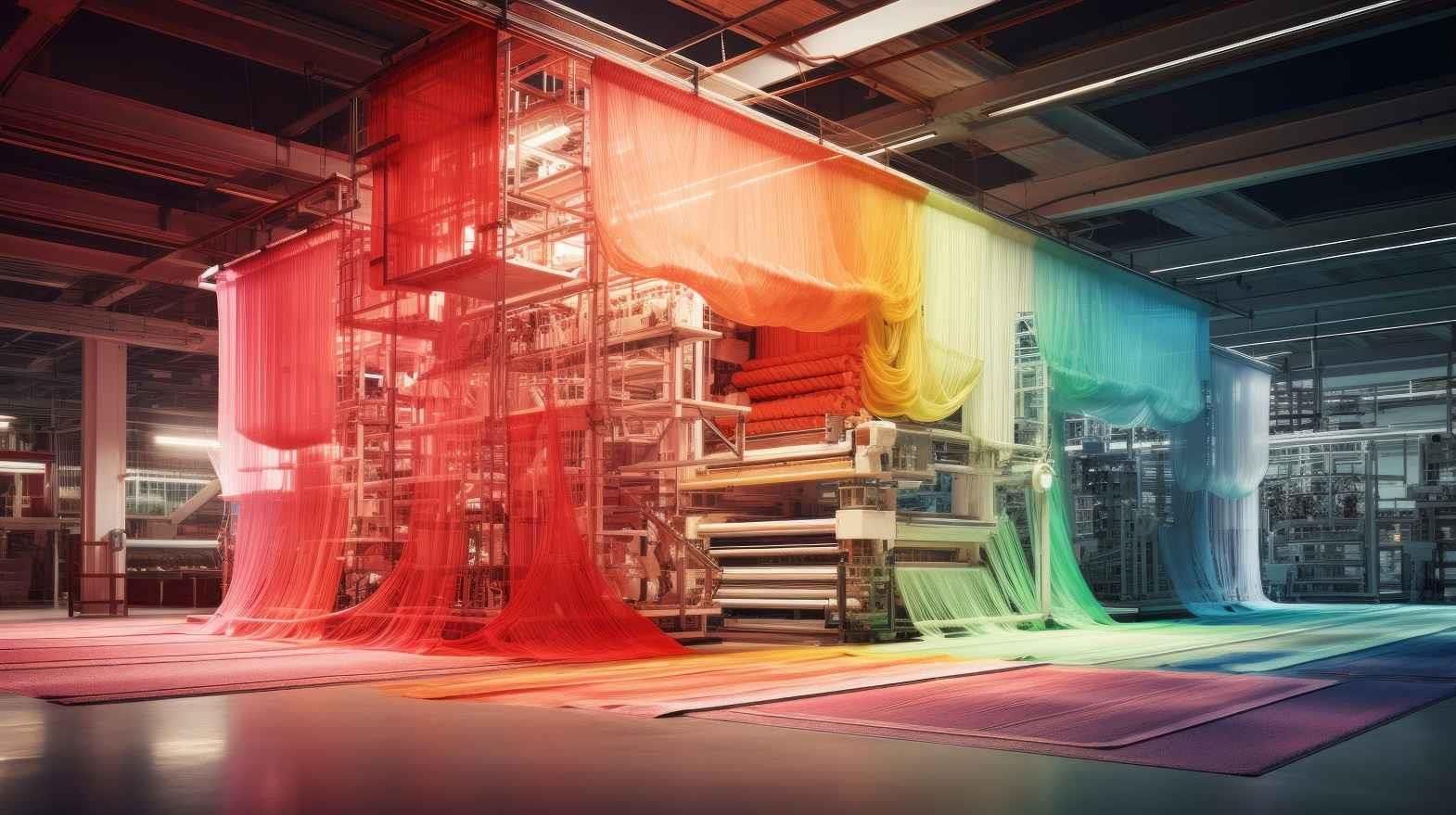In the past decade, world production of polyester staple has grown on an average rate of 6.5 per cent per annum. The world situation is dominated by China, which accounted for almost 65 per cent of the global total in 2010, and other Asian countries (together, 90 per cent). Global production of polyester staple is expected to rise by an average of 5.4 per cent per year through 2025, compared to 4.1 per cent for other fibers. World production of polyester filament has increased by an average of 8.2 per cent per annum during the past decade. Global filament production is expected to grow at an average annual rate of 7.2 per cent through 2025.
Polyethylene terephthalate, commonly known as polyester, contains ester functional group in the main chain. Textiles made up of polyester as self or in blends are extensively used in apparel - suiting, shirting, jackets, sports-wear, work-wear, ladies dress material and home furnishings --- and as blankets, furniture upholstery, curtains and other products.
The colouration of textiles, be it by dyeing or printing, is an important aspect of the production process and adds value. The specific requirements of colour shade hue and its fastness properties are major quality parameters demanded by end users. So, the contribution of dyestuff pigment industries in wet processing operations is enormous. The global estimated potential of textile dyes and pigment is US$ 5 billion.
Currently, polyester occupies a major share in global use of textile substrates . As the textile processing and coloration industries carry out processing of a wide variety of fibres, the dyestuffs selected are obviously from diverse classes of colorants such as acid, metal-complex and reactive for wool and silk; reactive, direct, vat, sulphur, napthol/base, etc for cotton and cellulosic; disperse for polyester, polyamide and acetate; basic for acrylics; and pigments, in general, for almost all kinds of material. The dyestuff market is mostly dominated by disperse and reactive dyes.
Today's lifestyle, fashion trends and concern for health and the environment have raised the demand for colourful wear with high fastness properties. The textile industry is facing challenges to satisfy end users' expectations on fastness specifications especially for high wash and rub fastness in apparel and sportswear. Retailers and brands are continuously introducing screening tests into their performance specifications to ensure they buy appropriate products. Thus, market trends have been influential in developing new disperse dyestuff range to meet customer demands. Keeping in mind the challenges faced by textile processors, Atul developed Tulasteron M-XLD range of disperse dyes to meet the most demanding retailer and brand specifications for high wet-fast outlets like sportswear, apparel and workwear.
Its special features and benefits are:
• Highest wet fastness level under severe test conditions
• Excellent build-up property
• Excellent reproducibility
• Improved rightfirst time performance
• Highly suitable for dyeing polyester/elastane blends
• Suitable for dyeing of polyester microfibre with good dry/wet rubbing fastness
• Suitable for dyeing of polyester/cotton blends without intermediate reduction clearing treatment
• Reduced process costs/high productivity
• Excellent laboratory to bulk reproducibility
• Perfect solidity of shades
• Covers wide colour spectrum in ternary shades
Different popular shades were developed on polyester/cotton (67/33) blended woven fabric using Tulasteron M-XLD disperse dyes/Novatic MD vat dyes following continuous dyeing method [Pad (one bath)DryThermofixationChemical PadSteam method] and wash fastness (ISO 105 CO6/C2) properties of these shades were evaluated. The results are below:
Another important aspect of high wet fastness of disperse dyes depends on its behaviour under thermal as well as thermo-migration. The thermal migration characterizes movement of dye during post-dyeing heat treatment (like heat setting) of a polyester substrate, resulting in the movement of disperse dyes out of polyester and their accumulation on the fibre surface. This phenomenon is also called colour blooming. Such presence of dye on the fibre surface limits its fastness properties, affects shade change and causes cross-staining on the adjacent substrate in case of blends. The specialty Tulasteron M-XLD dyes and certain high molecular weight disperse dyes are considered to withstand thermal migration.
Thermo-migration property, on the other hand, involves movement of dyes from the interior of polyester fibre to its surface under the influence of time (prolong storage), temperature and humidity. Such surface accumulated dyestuffs get transferred into processing, finishing chemicals resulting in impaired fastness properties.
In addition to deteriorating the wash, light, perspiration and rub fastness properties, such thermo-migration of dyestuff also causes shade changes and stains adjacent material. Generally, non-ionic processing/finishing chemicals are considered to accentuate migration and extraction of disperse dyes from polyester fibre. However, the extent may vary from depending on chemical characteristics. Therefore, it is usually recommended to study effect of finishing chemicals on thermo-migration through various test methods.
Summary
As the global consumer grows more demanding about a high level of all-round fastness, the dyestuff industry faces a challenge to manufacture high-quality dyes and pigments. This is one of the driving factors for their research and development activities.
The issues faced by the Indian dyestuff industry include falling margins with over-capacity, intense competition, need for innovation and demand for environmentally friendly dyes. Need for innovation across the entire supply chain of textiles has been identified as the key area for sustainability. The textile wet processing segment is facing challenges in the area of substrate, machinery, dyestuff, chemicals, process, fastness and statutory norms.
Modern lifestyles and changing needs demand a practical approach to satisfy stringent wet and other fastness demands. Consumer awareness is certainly remarkable and the producer's ability to translate, innovate and create has created opportunities for profiting from growing consumer demand. The Tulasteron M-XLD range of specialty disperse dyes is the tailor-made solution to satisfy stringent wet fastness demands of customers globally.
Reference:
1. Tecnon OrbiChem: Polyester and Cotton Unequal Competitors; AFCOTM
2. Teli, Coloration Technology, 124 (1)
3. Ibef.org
4. En.wikipedia.org







Comments